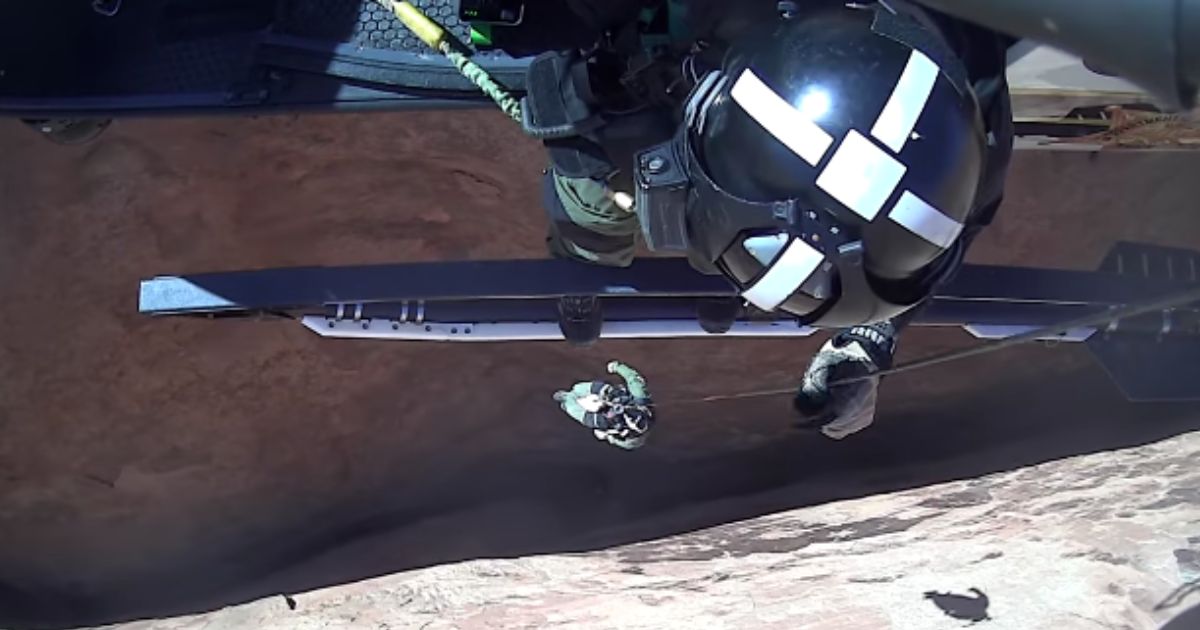One hiking group made up of two adults and 17 kids, ages 11 to 12, got far more adventure than they bargained for after embarking on a hike far beyond their skill level.
The unnamed youth group was camping in Utah when they decided to hike one of the local slot canyons. The area is known for its natural beauty and challenging slot canyons — but this group was no match for Sandthrax Canyon.
Sandthrax Canyon is widely known as being dangerous, difficult and absolutely not for anyone but the most experienced and daring canyoneers.
[firefly_embed]
[/firefly_embed]
“These are not for the novice,” Garfield County Sheriff Danny Perkins said, according to Fox News. “This is the ‘real deal’ in Red Rock country. This area will chew you up, with both the heat and later on with monsoon season. If you get caught in a slot canyon and there is a flood, it could be deadly.”
The hikers got stuck, didn’t have appropriate supplies and remained stuck in the canyon for over 30 hours as they grew more desperate and dehydrated.
Finally, on Friday morning, a helicopter rescue crew with the Utah Department of Public Safety made its way to the slot canyon to engage in one of the largest rescue operations they’d been involved in.
The rescue was highly technical and painstaking, as the canyon was so narrow and tricky to maneuver. If the cable brushed the walls, it could fray, and they decided the best way to rescue the group would be to send a man down and bring the stranded hikers up, one at a time.
[firefly_embed]
[/firefly_embed]
“When we spotted them, because of the number of people, we opted to set me up with a quick pick set-up, where I have a rescue vest on, I get lowered into the hole and strap them to me — and then the helicopter pulls me back up,” Sergeant Nick Napierski with the Utah Department of Public Safety said.
“The slot was 110-130 feet up, with a lot of rock overhang. If you’re not careful, you can hit into a wall or hit the rock ledge. You also have to make sure not to rupture a cable — if it hits the sandstone, it could fray.
“The rescue worked out well, though we typically don’t have 19 people stuck in a hole all at once.
“Any time we operate outside any norms like this, we have to re-evaluate why we need to do things differently. It is super tight through those jagged overhangs, so to send an empty hook down was not an option.”
The work was grueling and slow, and after rescuing five people, the team had to take a break. After pulling four more out, the helicopter had to refuel. From start to finish, the rescue of all 19 took about an hour and 45 minutes.
While no one was seriously physically injured, the kids were all in varying states of exhaustion, dehydration and shock. They were in much better spirits after getting to camp.
“Some were asking about their moms,” Napierski said. “When one leader said they were stuck for over 30 hours — these kids were young and this is Navy SEAL type of stuff.”
“This canyon is very difficult — it is not even for expert canyoneers. But this is what we train for. We have training every other week, where we set up these types of scenarios. It really comes down to a team mentality,” he added. “We do these hoists daily. The team in the aircraft is the bread and butter — and I’m grateful to spotlight them.”
[firefly_embed]
[/firefly_embed]
“The helicopter crew that came to rescue the group is one of the most highly trained crews in the United States,” Perkins said. “Pulling these kids out of the hole was like threading a needle — that’s how they got them out.”
“I tell people to know your limitations — and for whatever reason it is, people have a hard time with that. They want to go and have this experience. But know your limitations and don’t be cocky, especially if you’re responsible for others.”
While many are chastising the group leaders for their poor decision to take such an inexperienced group into such a high-skill-level canyon, one canyoneering expert has a more charitable explanation.
Christopher Hagedorn, who owns Get In The Wild Adventures and is very familiar with the area, said that the group may have intended to get into the nearby Leprechaun Canyon, but accidentally got to Sandthrax.
“Leprechaun is a beginner-level technical canyoneering route,” he said. “Sandthrax is one of the most difficult technical slot canyons on the Colorado Plateau.”
“In Sandthrax, ill-prepared and inexperienced canyoneers start descending the canyon, rappel down and quickly find they are way over their heads and can’t descend or retrace their steps. They are trapped.”
Despite the ordeal, the group is safe and sound thanks to the expertise of the rescue team and is certainly going home with a tale to tell.
This article appeared originally on The Western Journal.

























 Continue with Google
Continue with Google